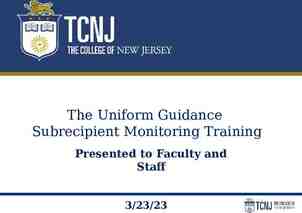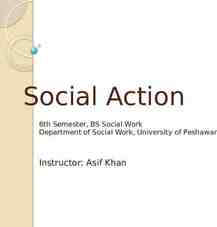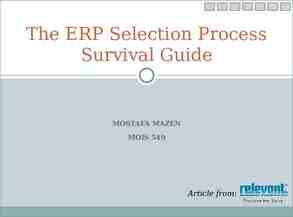Functionalist and Subcultural Theory How Howto tonavigate
30 Slides1,022.00 KB

Functionalist and Subcultural Theory How Howto tonavigate navigatethis thisSlide SlideShow: Show: Either: Either:Click Clickthe thescreen screenicon iconbelow belowfar farright rightfor forthe the‘Slide ‘SlideShow’ Show’option. option. Use Usethe theleft leftmouse mousebutton buttonto toenter entereach eachnew newbullet bulletpoint pointand andto tomove moveon onto tothe the next page [Press Esc to exit Slide Show at any time]. next page [Press Esc to exit Slide Show at any time]. Or: Or:use usethe thearrows arrowsbelow belowto tonavigate navigatefrom fromone onescreen screento tothe thenext. next. Or Orclick clickon onthe thewords wordson onthe theleft leftto togo goto tothe theappropriate appropriateslide slideof ofyour yourchoice. choice.

Accessibility Statement This This slide slide show show has has been been designed designed to to be be user user friendly friendly to to people people with with dyslexia dyslexia and and visual visual impairment. impairment. The The accessible accessible font font used used for for text text is is Arial Arial Black Black font font on on aa white white background background is is avoided. avoided. Instead, Instead, font font colour colour and and background background have have been been chosen chosen to to complement complement each each other other in in order order to to avoid avoid stark stark contrasts contrasts which which dyslexic dyslexic readers readers find find hinders hinders reading. reading. All All text text is is left-justified left-justified to to avoid avoid ‘rivers ‘rivers of of white’. white’. 06/12/22 Crime and Deviance Chapter 5: Functionalist and Subcultural Theory 2

Objectives of Chapter 5 Following this Slide Show you should: Be aware of the influence of Emile Durkheim and his concept of anomie in explaining crime. Be familiar with Robert Merton’s development of anomie in his ‘anomic paradigm’. Recognise the link of Hirschi’s bonds of attachment with anomie theory. Be aware of the link between family and crime and how it might fit in with anomie. Be critically aware of the strengths and weaknesses of anomie theory as an explanation of crime. 06/12/22 Crime and Deviance Chapter 5: Functionalist and Subcultural Theory 3

Functionalist Theory and Crime Emile EmileDurkheim Durkheim(1858-1917, (1858-1917,pictured pictured left) left) was wasthe thefirst firstsociologist sociologist to tostudy studycrime crime and andsignificantly significantly influenced influencedthe the functionalist functionalisttheory theory that that would wouldfollow. follow. Durkheim Durkheimsaw sawcrime crime as asaaparticular particular problem problem of of modernity modernity (the (thetransformation transformation into into an anindustrialised industrialisedsociety). society). He Hefelt feltan anunderstanding understandingof ofcrime crimeand anddeviance deviancewas was essential essentialin inorder order to tounderstand understandhow howsociety societyfunctioned. functioned. 06/12/22 Crime and Deviance Chapter 5: Functionalist and Subcultural Theory 4

Durkheim and Anomie Emile EmileDurkheim Durkheimdeveloped developedthe the term term anomie anomieto toexplain explainwhy whysome somepeople people became becamedysfunctional dysfunctionaland andturned turnedto tocrime. crime. Anomie Anomiemeans meansbeing beinginsufficiently insufficiently integrated integratedinto intosociety’s society’s norms normsand and values. values. Anomie Anomiecauses causessociety societyto to become becomeless lessintegrated integrated and andmore moreindividualistic. individualistic. 06/12/22 Anomie Anomiecauses causes individuals individualsto to look lookout outfor forthemselves themselvesrather rather than thanthe the community. community. Crime and Deviance Chapter 5: Functionalist and Subcultural Theory 5

Crime as an Industrial Problem Crime Crimeand anddeviance devianceassociated associatedwith with decline declineof of mechanical mechanicalsolidarity solidarity Durkheim Durkheim saw sawprevalent prevalentin inprepreindustrial industrialsocieties. societies. In Insuch suchsocieties societiescrime crimewas wasnot not absent absentaltogether altogetherbut butthe theuniformity uniformity of of roles, roles, status statusand and values valuesof of the the close-knit close-knitcommunity communitypromoted promoted conformity. conformity. 06/12/22 Crime and Deviance Chapter 5: Functionalist and Subcultural Theory 6

Crime Linked to Social Change In Intimes timesof of social socialchange change individuals individualsmay maybecome becomeunsure unsure of ofprevailing prevailingnorms normsand andrules. rules. They Theyare areconsequently consequentlymore moreat at risk riskof ofbreaking breakingthem. them. There Thereisis aaweaker weaker collective collective conscience conscienceof ofshared sharedvalues values to toguide guideactions. actions. Durkheim Durkheimsaw sawAnomie Anomieexpressed expressednot notjust just through throughcrime, crime, but but also alsoby bysuicide, suicide,marital maritalbreakdown, breakdown,and andindustrial industrialdisputes. disputes. 06/12/22 Crime and Deviance Chapter 5: Functionalist and Subcultural Theory 7

Crime and Deviance Can Be Both Positive and Negative Durkheim Durkheim saw sawhigh high levels levels of of crime crimeand anddeviance devianceas as very very negative negative for for society societycausing causinguncertainty uncertaintyand anddisruption. disruption. However, However,aacertain certainamount amountof ofcrime crimecould couldbe beviewed viewed positively, positively,helping helpingto topromote promotechange changeand andreinforce reinforcevalues. values. Crime Crime can can be: be: 06/12/22 Normal Normal Universal Universal Crime and Deviance Chapter 5: Functionalist and Subcultural Theory Functional Functional 8

Beneficial Social Change from Crime and Deviance Suffragette and Suffragist Movements Rosa Parkes’ refusal to give up her seat to a white man on a US bus Martin Luther King 06/12/22 Crime and Deviance Chapter 5: Functionalist and Subcultural Theory 9

Critique of Durkheim Durkheim's Durkheim'swork workisisimportant importantfor for offering offeringaa social socialdimension dimensionto tocrime. crime. He Helinks linksanomie anomieto toaaderegulated, deregulated, more moreindividualistic, individualistic, industrial industrialsociety. society. But Buthe he cannot cannot explain explain why why some some people peopleare are more moredeviant deviant than thanothers. others. 06/12/22 Crime and Deviance Chapter 5: Functionalist and Subcultural Theory 10

Robert Merton’s Strain Theory Robert Robert Merton Merton (1910-2003, (1910-2003,pictured pictured left) left) regarded regardedthe theconcept concept of of'anomie' 'anomie'as asused used by byDurkheim Durkheimas astoo toovague, vague,so sohe he developed developedits itsmeaning. meaning. As Asaa functionalist, functionalist,he herecognised recognisedthe the importance importanceof ofshared shared goals goalsand andvalues valuesof of society society––in inthe the USA USAparticularly particularlythe the ‘American ‘AmericanDream’. Dream’. But Buthe herecognised recognisedthat thatnot not everyone everyonehas hasthe thesame same opportunity opportunity to toshare share these these goals goalsand andvalues. values. 06/12/22 He Healtered alteredanomie anomieto tomean meanaa society societywhere wherethere thereisisaa disjunction disjunctionbetween between goals goalsand and the the means meansof of achieving achievingthem. them. Crime and Deviance Chapter 5: Functionalist and Subcultural Theory 11

Strain Theory and the Anomic Paradigm Merton Mertondeveloped developed‘strain ‘straintheory’ theory’to to reflect reflect the thestrain strainbetween between goals goalsand andmeans meanswith withaafive-fold five-fold 'anomic 'anomicparadigm‘: paradigm‘: Responses Means Goals Conformists Innovators - Ritualists - Retreatists - - /- /- Rebels 06/12/22 Crime and Deviance Chapter 5: Functionalist and Subcultural Theory 12

Merton (Continued) Merton’s Merton’stheory theoryisis'structural’: 'structural’:he he locates locates the thecause causeof of crime crimein in American Americansociety society––support support for for the the“American “AmericanDream”. Dream”. Being Beingblocked blockedfrom from success success leads leadsto todeviance, deviance,as as ‘innovators’ ‘innovators’they they adopt adopt illegitimate illegitimatemeans means to toachieve achievethe the goals goalsthey theycannot cannotachieve achievelegitimately. legitimately. 06/12/22 Crime and Deviance Chapter 5: Functionalist and Subcultural Theory 13

Critique of Merton He Hecan canexplain explaindifferent differentpatterns patterns of ofdeviance: deviance: for forexample, example, one one person personmay maysteal steal(innovator) (innovator) while while another anothermay maytake takedrugs drugs (retreatist). (retreatist). His Hiswork workbecame becameaa direct direct inspiration inspirationto to subcultural subculturaltheory. theory. Laurie LaurieTaylor Taylor described described ititas asthe the“fruit “fruitmachine machine theory theory of ofcrime”. crime”. However, However, as as aa functionalist functionalist he he cannot cannotexplain explainwhere where the therules rules come comefrom fromin infirst firstplace. place. 06/12/22 Crime and Deviance Chapter 5: Functionalist and Subcultural Theory 14

Travis Hirschi Another Another key keysociologist sociologist to tobe beinfluenced influencedby by Emile Emile Durkheim Durkheim and and the theconcept conceptof of anomie anomieisis Travis TravisHirschi Hirschi. He Heasks asks the thequestion: question: why whydon't don't more morepeople people commit commitcrime crimethan thanthey they do? do? 06/12/22 To Toanswer answerthis, this, he heargues, argues,we we need needto tounderstand understandwhat whatforces forces maintain maintainconformity conformity for formost most people peoplein insociety. society. Rather Rather than thanthe thefactors factorsthat that drive driveaaminority minorityinto intodeviant deviant behaviour. behaviour. Crime and Deviance Chapter 5: Functionalist and Subcultural Theory 15

Hirschi’s ‘Bonds of Attachment’ He Heidentified identifiedfour four bonds bondsof ofattachment attachment that thathelp helpbind bindsociety society together: together: Attachment: Attachment: the the extent extent to towhich whichwe wecare careabout about other otherpeople's people'sopinions opinions and anddesires. desires. Commitment: Commitment: the thepersonal personal investment investmentwe weput putinto intoour ourlives; lives; in inother otherwords, words,what whatwe wehave haveto to lose loseififwe weturn turnto tocrime crimeand andget get caught. caught. Involvement: Involvement: how howintegrated integratedare are we weso sothat thatwe we neither neither have have the the time time nor nor inclination inclinationto tobehave behavein in aadeviant/criminal deviant/criminalway. way. 06/12/22 Belief: Belief: how howcommitted committedare are individuals individualsto toupholding upholding society's society'srules rulesand andlaws? laws? Crime and Deviance Chapter 5: Functionalist and Subcultural Theory 16

Subcultural Theory Subcultural Subculturaltheory theory assumes assumesthat that those thosewho whodeviate deviatehold hold different different values valuesto tomainstream mainstreamsociety. society. ItIt is is centred centred around around the the idea idea of of crime crime and and deviance deviance is is aa reaction reaction by by aa group group who who reject reject the the majority majority view view and/or and/or feel feel excluded. excluded. 06/12/22 Crime and Deviance Chapter 5: Functionalist and Subcultural Theory 17

American Subcultural Theory Robert Robert Merton Merton was was accused accused of of not not being being able able to to explain explain nonnonmaterial material crime. crime. So So subcultural subcultural theory theory developed developed to to explain explain such such crime crime in in terms terms of of subcultures. subcultures. The main proponents were: Albert Cohen 1955 06/12/22 Cloward and Ohlin (1960) Crime and Deviance Chapter 5: Functionalist and Subcultural Theory Walter B. Miller (1963) 18

Albert Cohen (1955) Status Status Frustration Frustration Reaction Reaction Formation Formation Youths Youths rebound rebound from from conventional conventional failure failure (e.g. (e.g. in in schooling). schooling). 06/12/22 Faced Faced with with failure failure they they choose choose aa delinquent delinquent subculture. subculture. Crime and Deviance Chapter 5: Functionalist and Subcultural Theory 19

Cloward and Ohlin (1960) Like Like Robert Robert But But they they disagree disagree with with Merton Merton Merton they they Merton that that delinquents delinquents share explain share the the same same explain values/goals as the rest of values/goals as the rest of working-class working-class society. society. crime in terms crime in terms of of goals goals and and Cloward and Ohlin means. means. see lower working-class So they Because of delinquents as sharing develop an ‘blocked their own deviant illegitimate opportunities’ subcultural values. career they cannot get structure. on legitimately. Crime and Deviance Chapter 5: 06/12/22 Functionalist and Subcultural Theory 20

Cloward and Ohlin (Continued) Cloward Cloward and and Ohlin Ohlin identified identified 33 types types of of delinquent delinquent subculture: subculture: Criminal Criminal Subculture Subculture 06/12/22 Conflict Conflict Violent Violent Subculture Subculture Crime and Deviance Chapter 5: Functionalist and Subcultural Theory Retreatist Retreatist (drug) (drug) Subculture Subculture 21

Critique of Cloward and Ohlin Not everyone gets sucked into Illegitimate career structure. Fails to consider white-collar crime. 06/12/22 Women have more blocked opportunities than men. Crime and Deviance Chapter 5: Functionalist and Subcultural Theory 22

Walter B. Miller (1962) Miller Miller saw saw the the lower lower workingworkingclass class socialised socialised into into deviant deviant subcultural subcultural values values he he called called ‘focal ‘focal concerns’. concerns’. Trouble Autonomy Toughness Focal concerns Fatalism Excitement Smartness 06/12/22 Crime and Deviance Chapter 5: Functionalist and Subcultural Theory 23

Critique of Walter B. Miller Ignores Females Many Manymiddlemiddleclass classalso alsoadopt adopt ‘focal ‘focalconcerns’ concerns’ And Andnot notall alllower lowerworkingworkingclass classadopt adopt‘focal ‘focalconcerns’ concerns’ 06/12/22 Crime and Deviance Chapter 5: Functionalist and Subcultural Theory 24

Do Subcultures Explain Crime in Britain Today? Howard Howard Parker Parker (1974) (1974) found found evidence evidence of of ‘focal ‘focal concerns’ concerns’ in in his his study study of of working-class working-class youth youth in in Liverpool. Liverpool. Leisure Leisure values values 06/12/22 Dissociation Dissociation However, However, David David Downes Downes (1966) (1966) found found limited limited evidence evidence of of subcultural subcultural values values in in his his study study of of working-class working-class youth youth in in East East London. London. Instead Insteadhe hefound foundthem them dissociated dissociatedfrom frommainstream mainstream values valuesof oflong-term long-term employment, employment,instead insteadfocused focused on onleisure leisureand andhedonism. hedonism. Crime and Deviance Chapter 5: Functionalist and Subcultural Theory 25

Subterranean Values David David Matza Matza (1964) (1964) adopts adoptsan an interactionist interactionist critique critiqueof of subcultural subculturaltheory. theory. He Heargues arguesthat thatyoung youngpeople people are areless lessskilled skilledin insuppressing suppressing Young people ‘drift’ into Young people ‘drift’ into subterranean values and subterranean values and and out of deviance as and out of deviance as when these drive deviant when these drive deviant part part of of the the normal normal process process behaviour they use techniques behaviour they use techniques of growing up. of growing up. of of neutralisation neutralisationto tojustify justify them. them. 06/12/22 Crime and Deviance Chapter 5: Functionalist and Subcultural Theory 26

Social Exclusion or The Paradox of Inclusion? Carl Nightingale (1993) Observed how black people Philip Bourgois avidly consumed Found (1995) US culture e.g. widespread Jock Young (2003) designer labels. support amongst Found black Americans Found in in the the sink sink estates for the American estates of of Britain, Britain, satellite Dream. They dealt satellite dishes, dishes, designer in drugs to designer prams, prams, appetite finance it. appetite for for Hello Hello magazine, magazine, etc. etc. Crime and Deviance Chapter 5: 06/12/22 Functionalist and Subcultural Theory 27

Masculinity Bob Connell M. M. Collinson Collinsonargues argues itit is is not not subcultural subcultural but but masculine masculine values values that that often often underpins underpins deviant deviant behaviour. behaviour. Hegemonic Masculinity Bea Campbell Aggressive Masculinity 06/12/22 Crime and Deviance Chapter 5: Functionalist and Subcultural Theory 28

Postmodernism J. J. Katz Katz (1988) (1988) argues argues that thatcrime crimeisisseductive seductive and andpeople peopleengage engagewith with ititbecause becauseititisis exciting. exciting. S. S.Lyng Lyng(1990) (1990) sees sees people peopledriven drivenby by ‘edgework’ ‘edgework’attracted attractedby by flirting flirtingwith withdanger. danger. 06/12/22 Postmodernists Postmodernistsargues argues that that subcultural subculturaltheory theoryfalls fallsdown down (as (asdo domost most theories) theories) for for looking lookingfor for aarational rational explanation explanation of ofcrime crimeand and deviance. deviance. DrugDrugtaking taking JoyJoyriding riding Crime and Deviance Chapter 5: Functionalist and Subcultural Theory FootballFootballviolence violence 29

End of Presentation 06/12/22 Crime and Deviance Chapter 5: Functionalist and Subcultural Theory 30






